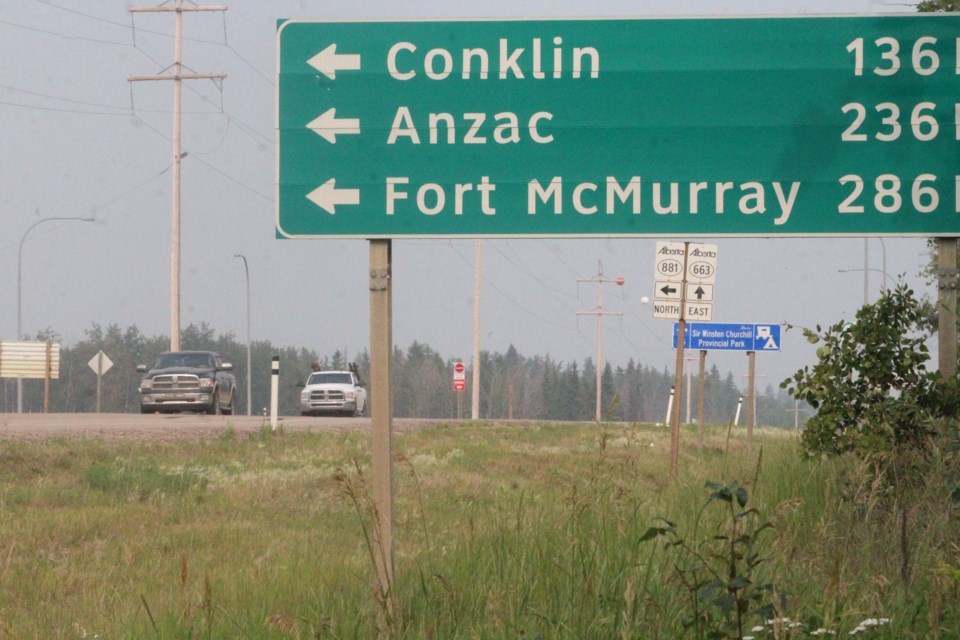LAKELAND – This summer, highways north of Lac La Biche were affected by increased wildfire activity that saw the temporary closures of Highway 63 north of Wandering River as well as Highway 881 between Conklin and Janvier. The highways were closed to traffic due to a growing forest fire near Janvier.
So what happens if a major forest fire prompts evacuation orders in the Regional Municipality of Wood Buffalo, including Fort McMurray, and both highways leading into the northern Alberta municipality are closed, restricting traffic going north and south? How do nearby fire departments such as Lac La Biche County Fire Rescue Services respond in such a scenario?
Erin Sieger, manager of Emergency Management for the Regional Municipality of Wood Buffalo (RMWB), said while a highway closure could potentially delay a mutual aid response from other municipal fire departments, the RMWB Regional Emergency Response model is based off four full-time fire halls in Fort McMurray and six paid, on-call fire halls in the surrounding communities. This, she said, allows for a regional response to communities along Highway 881, and elsewhere.
“The Municipality plans and trains for various emergencies every year using scenarios that often include highway impacts,” Sieger told Lakeland This Week. “We also encourage residents to be prepared and resilient for emergencies by having an emergency plan for their household and an emergency kit with essential items to sustain their family for at least 72 hours.”
During wildfire season, Sieger continued, emergency management planners with the Regional Municipality of Wood Buffalo are in close contact with Alberta Wildfire and keep aware of situations on the ground, so that people can be evacuated if required.
Trigger points for evacuation, she explained, are determined based on various factors including egress considerations, time required for egress, weather and fire forecasts, and recommendations from Alberta Wildfire or Alberta Emergency Management Agency (AEMA).
“If for some reason, we were unable to evacuate people, there are defensible buildings we’ve identified in each community that could be used for people to shelter in place,” she said.
According to Sieger, there are three reasons a wildfire could cause a highway closure, which includes heavy smoke, wildfire impinging on or crossing a highway, and firefighting equipment blocking the highway. During a closure, emergency responders may still be able to chaperone through impacted highways.
Alberta Transportation, in conjunction with RCMP, manages highway closures. Sieger said it is important to note that highway closures are temporary interruptions and highways are reopened as soon as it is safe to do so.
She further explained, Alberta Wildfire leads wildfire management and response in the forest area and can bring aerial resources in to support operations when highway travel is impacted.
John Kokotilo, regional fire chief for Lac La Biche County, said if there is a major wildfire in the Wood Buffalo area and traffic is restricted from heading south, but Lac La Biche County Fire Rescue Service and other departments need to respond, fire response equipment will be escorted on the highway if needed.
If firefighting personnel and equipment cannot reach a location by road, they can be shipped into a particular area by plane. Kokotilo said this happened a couple of years ago with the wildfires in Fort Chipewyan and is commonplace during large fire events.
According to Sieger, the RMWB has developed a series of community emergency management plans for each community that deal with the specific challenges each may face, including wildfire threats.
“These plans are under review and will be updated to reflect learnings from this most recent alert and from other recent emergencies we’ve experienced,” she said.

